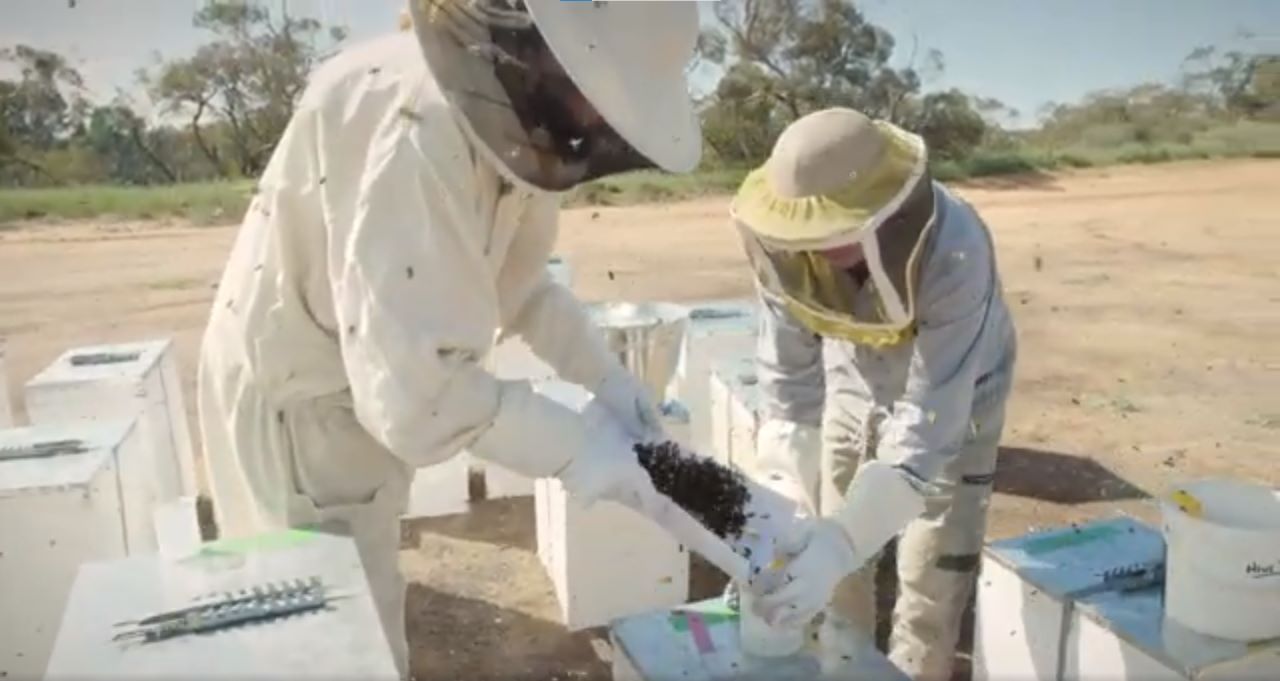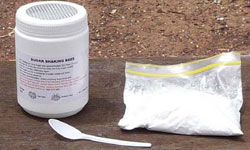Testing to detect varroa mite
There are 3 tests commonly used to detect varroa mite and other pests, including
- alcohol wash
- sugar shake and
- drone uncapping.
The collection of bees from hives, may agitate hive bees, including guard bees. People inexperienced in handling bees should first read Safe beekeeping practices.
Before opening a hive
- make sure you understand safe handling techniques and
- wear protective clothing when collecting bees for testing.
Alcohol wash test to detect honey bee parasites
Alcohol washing is a quick and effective method for detecting the presence of Varroa and Tropilaelaps mites, as well as monitoring mite levels in a bee colony.
Alcohol washing can remove over 90% (with multiple washes) of external Varroa mites present on adult honey bees.
While sugar shake and drone uncapping are useful detection methods, alcohol washing has been found to be more effective at detecting Varroa mite.
 Figure 1: Alcohol washing involves collecting a sample of approximately 300 (1/2 cup) bees, taken from the centre of the brood nest. Placing the bees in a jar or container they are washed in 125ml of 75% rubbing alcohol or methylated spirits. This wash is performed 3 times in total on the same sample of bees.
Figure 1: Alcohol washing involves collecting a sample of approximately 300 (1/2 cup) bees, taken from the centre of the brood nest. Placing the bees in a jar or container they are washed in 125ml of 75% rubbing alcohol or methylated spirits. This wash is performed 3 times in total on the same sample of bees.
For more information, visit alcohol testing to detect honey bee parasites.
Sugar shake test to detect Varroa mite
When the mites are dusted with pure icing sugar, the fine granules stick to their feet and they can no longer grip the surface they are clinging to.
The dusting of adult bees with icing sugar causes mites to fall off the bee into the white sugar where they are more easily seen.

Figure 2: Some of the equipment needed for sugar shake test; one 500 gram or 750 gram jar with a plastic or metal lid. Drill 50 to 70, holes approximately 3 to 4mm in the lid pure icing sugar (do not use icing mixture), plastic tablespoon for measuring icing sugar.
For more information, visit sugar shake test to detect Varroa mite.
Drone Uncapping
In colonies with large brood nests, up to 85% of Varroa mites can be found within capped brood cells, with a preference for drone brood.
Therefore, uncapping drone brood (push the comb/fork of the scratcher through a patch of capped drone brood and pull a large patch of pupae out all at once) and examining pupae is an effective method for detection of Varroa mites.
This method is also effective for Tropilaelaps mites, which spend the majority of their lifecycle within honey bee brood.
For more information, visit drone uncapping test.